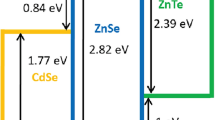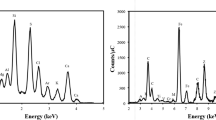Abstract.
Laser ablation of graphite and organic samples is studied in the context of chemical analysis by laser-induced plasma spectroscopy. Ablation is performed using an Nd:YAG laser at 1.064 μm in ambient air at atmospheric pressure. Following ablation of graphite, we find results consistent with C2 (as well as C) being released directly from the target, and CN being formed later on by the interaction of C2 with atmospheric nitrogen (N2). In the case of organic compounds, we find a clear relationship between C2 emission from the plasma and the presence of aromatic rings (containing carbon–carbon double bonds) in the compounds.
Similar content being viewed by others
Author information
Authors and Affiliations
Additional information
Received: 21 July 1999 / Accepted: 11 September 1999 / Published online: 28 December 1999
Rights and permissions
About this article
Cite this article
St-Onge, L., Sing, R., Béchard, S. et al. Carbon emissions following 1.064 μm laser ablation of graphite and organic samples in ambient air . Appl Phys A 69 (Suppl 1), S913–S916 (1999). https://doi.org/10.1007/PL00006964
Issue Date:
DOI: https://doi.org/10.1007/PL00006964




